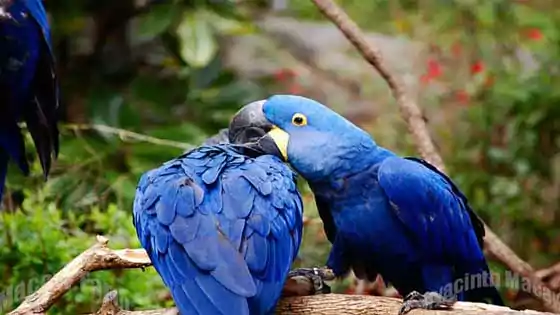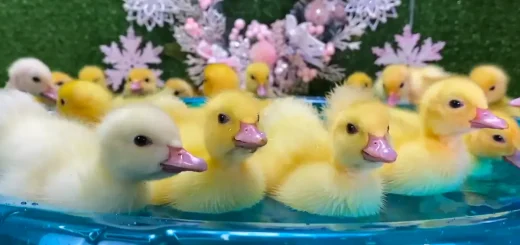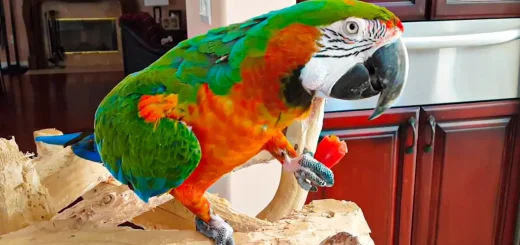How many Spix macaws will be left in 2024?
The Spix macaws current population status in 2024 poses significant challenges. Urgent conservation efforts and habitat restoration are required to ensure the survival of this critically endangered species. There are currently nineteen macaw species left in the wild. Factors Contributing to Spix Macaw Population Decline:

Deforestation: The deforestation that eliminated the Spix macaws’ natural habitat. It has a devastating effect on their population. Deforestation has significantly reduced the macaws’ available resources by removing the trees. Spix macaw depend on trees for nesting and foraging.
Illegal pet trade: The allure of having such a rare and beautiful bird as a pet. This has fueled the illicit pet trade. Resulting in the capture and sale of thousands of Spix macaws. This practice not only upsets the natural population balance. But also eliminates their ability to contribute to the species’ survival.
Habitat fragmentation: As forests are cleared for agriculture, the remaining habitat areas become fragmented, isolating macaw populations. This fragmentation makes it difficult for them to find suitable spouses. And reduces genetic diversity, threatening the species’ survival.
Spix Macaw: Are Rarest In the World.
The only member of the parrot species Cyanopsitta is Spix’s Macaw (Cyanopsitta spixii). In the wild, they are currently extinct. Several breeding programs are in place to protect the species. It was discovered in the Brazilian state of Bahia due to its reliance on Carabeira (Tabebuia aurea) trees for nesting. It has a minimal natural habitat.
The Spix’s Macaw, also known as the Little Blue Macaw, is a lovely blue parrot smaller than the Hyacinth Macaw. Spix macaws measure about 100 cm in length.
The Spix’s Macaw measures 56 cm long and has a wingspan of 64 cm. And weighs between 295 and 400 grams. It lives for about 28 years in the wild and another 10 in captivity.
On the wings and the graduated tail, the blue plumage darkens. The underparts are paler, more blue-grey. The undertail feathers, as are the flight feathers on the underwing, are light grey.
The lighter body contrasts with the pale blue-grey head. The brow, cheeks, and ear coverts are slightly blue-washed. The hooked bill is blackish-grey grey. Adults have pale straw-colored hair.
Is the Spix Macaws extinct? And why is it extinct?
This bird has been completely extinct from its natural range. After a multi-year survey, the IUCN officially declared the Spix macaw extinct in the wild in 2019. However, in 2022, two groups of individuals were reintroduced into the wild.
The Spix’s Macaw has become extinct in the wild are the following:
- habitat loss,
- illegal pet trade, and
- Persecution.
This species had a minimal range. The nearly total loss of its nesting habitat resulted from destroying the Caraiba woodlands. It plays a significant role in its extinction. These lovely birds have been extensively trapped for the illegal cage-bird trade.
Africanized honey is being introduced. Bees (Apis mellifera scutellata) competed for cavity nests and killed incubating Macaws at the nest.
Can Spix Macaw Talk?
Yes, the Spix macaw can talk. Spix macaws can mimic human speech and learn new words. Macaw couples will live in flocks of 10 to 30 birds in the wild. All are calling, squealing, and producing the macaw “scream” throughout the forest. Several kinds of sounds are used within the flock to communicate or to mark territorial claims. Individual birds even develop distinct songs for their mates to recognize them. Because some macaw screams may be deafening when heard indoors. The macaw is not a good choice for people who prefer peace at home.
Although macaws lack the larynx that humans use to produce speech, they do have a syrinx. Locate the syrinx in the bottom of the trachea. And manipulated by air passing over the syrinx, throat, and mouth.
Can Spix Macaws fly?
Spix Macaws have sleek bodies and tails and wings that do not flap deeply to allow them to fly through the forest trees. When they land, they lower their tail and feet. They use their wings as brakes to slow down before holding a perch with their feet—many Spix macaws nest in tree holes, earthen banks, and cliff sides.
Spix Macaws are clever and curious birds that enjoy exploring and staying busy. They are acutely aware of their surroundings. It helps to keep predators at bay. They pass a lot of time interacting with their partner. And family groups because they are social birds. Macaws have been observed using objects as tools, and they enjoy doing so.
They examine the objects from various perspectives, moving them with their feet. And putting them to the test with their tongues and tossing them around.
What is the rarest Spix macaw?
The Spix’s macaw is a beautiful blue-gray bird with a snowy-white face, the world’s rarest parrot. The Spix’s Macaw was always considered rare. There are some reasons for centuries of deforestation and loss of habitat. Capture for the bird trade resulted in the extinction of the wild population.
Although breeding in captivity now gives the Spix’s Macaw a chance to return to the wild. And bird collectors illegally purchased wild birds for their private collection for over a century, fueling their decline. The Brazilian government, conservation organizations, and bird breeders have joined forces to work on the reintroduction effort, with the first releases scheduled for June 2022.
Spix’s macaw is little one of the world’s rarest birds. There are also significant rarest colors Spix macaws such as bright blue color, grey head, and black beak.
Blue Spix macaw’s population in 2024?
The Spix macaw is also known as a little blue macaw. This little blue macaw is extinct in the world’s most. The Spix macaw population has declined significantly over the years due to habitat loss, illegal trade, and other factors.
It isn’t easy to estimate the current population of these beautiful birds. However, conservation organizations and researchers work together to collect data through accurate field surveys and monitoring efforts. However, the exact number is unknown. Only a few dozen Spix macaws are estimated to remain in the wild.
How many Spix macaws are left in the world of 2024?
Spix macaws’ habitat is also thought to have the most excellent latitudinal range of any bird in the genus era. Estimate maximum territorial range of 6,700,000 km2. Nonetheless, the Spix Macaw’s habitat is fragmented. The bird is mainly confined to tiny populations. Scattered across its original Middle American range. The IUCN classifies the species as the most minor concern. Estimates of the wild population currently number between 20,000 and 50,000 people.
Conclusion
several macaws are now listed as endangered or critically endangered, and some have gone extinct or are extinct in their native habitat. Macaw habitat has been reduced due to illegal pet trading, deforestation, and development. Spix macaws are among the world’s rarest and extinct birds. Spix macaws is very little and they can talk and fly.
Conservationists are experimenting with various strategies to help macaws, such as paying residents to leave the birds. And their habitat alone or using tourist fees to buy up and protect forest area. Where visitors can see the birds. Many reserves in macaw habitat have been established, with lodges built for tourists who enjoy seeing these colorful birds.









